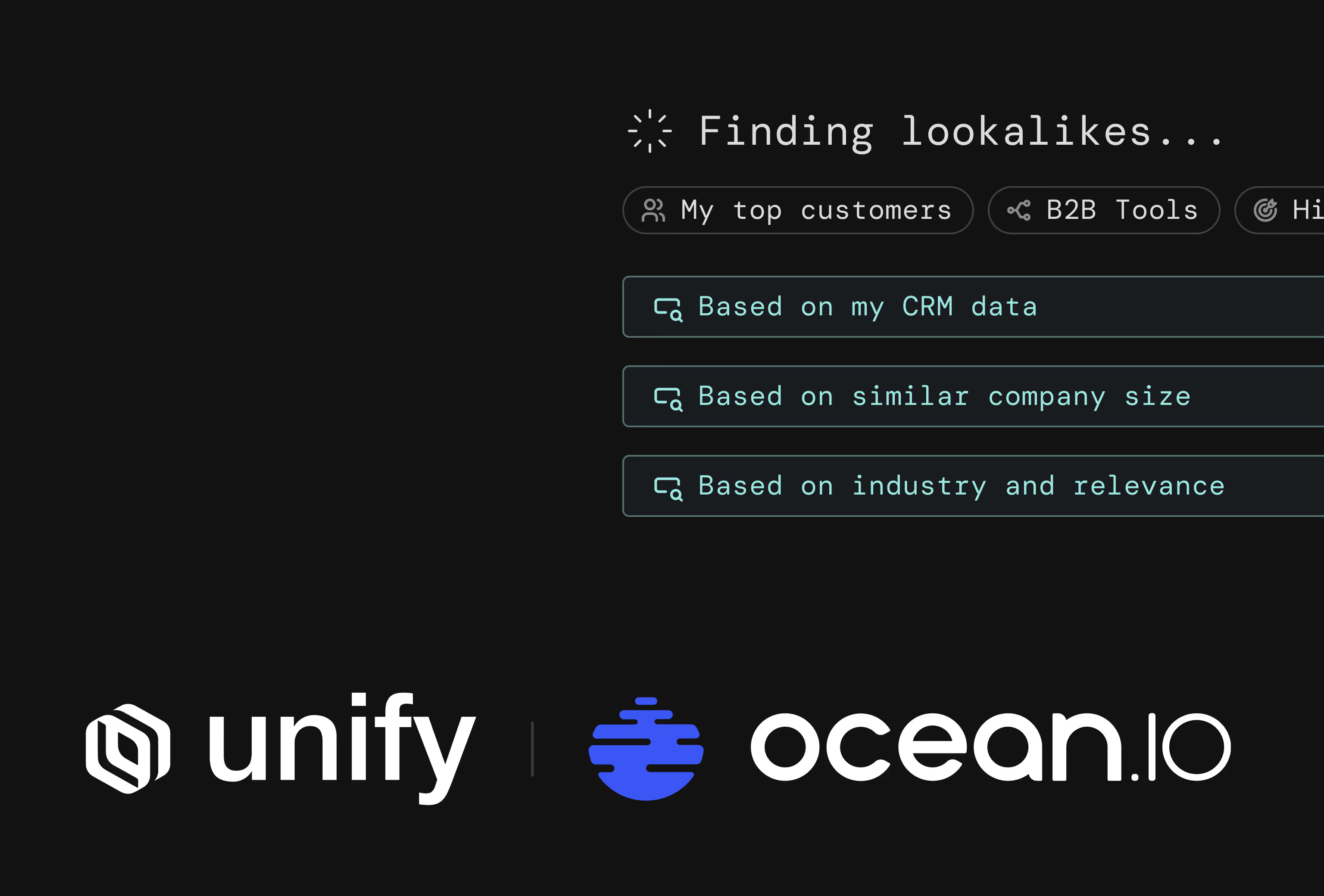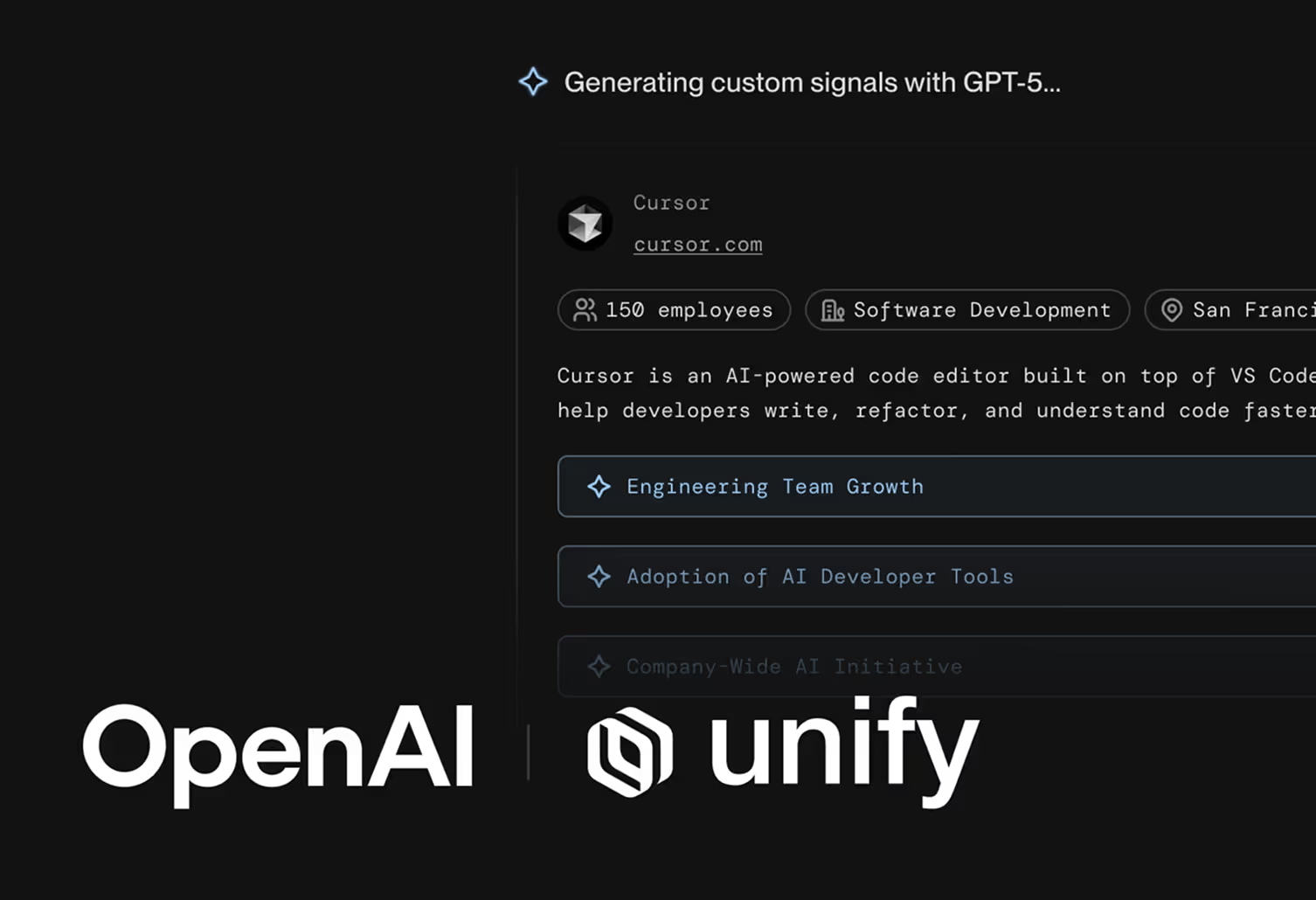Why every company is hiring a growth team
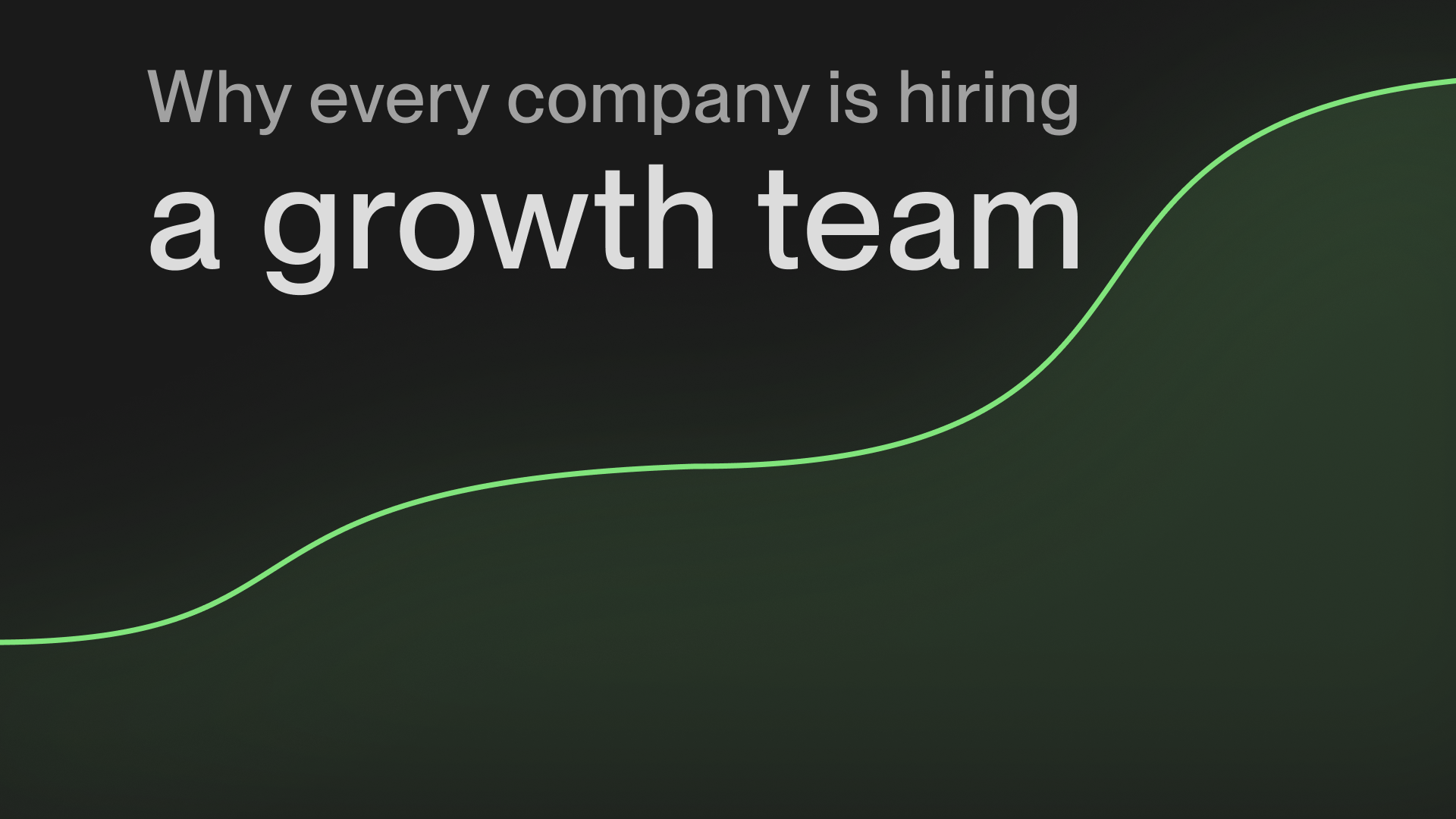
Go-to-market used to feel straightforward: pour money into ads, run a few email campaigns, and watch pipeline grow. Today, CACs are climbing as cost and competition balloon across traditional distribution channels. The tactics that once felt automatic now barely move the needle.
The companies that have managed to break through haven’t discovered some secret channel or hacky campaign. They have had to redefine their approach to distribution itself, by building growth teams.
But wait, isn’t growth just a rebranding of marketing or demand generation?
While the goal is still to grow pipeline and revenue, the way growth teams tackle it is quite different. Growth starts with the outcome, and works backwards to build the system. Their approach fuses the creativity and taste of marketing, the analytical rigor of demand generation, and the systems thinking of engineering. The result is a revenue engine that is faster, leaner, and far more scalable.
Why growth teams, why now?
AI has made it possible for anyone, not just engineers, to build and deploy software. That means more competition, and higher velocity of product being shipped. At the same time, distribution has become more critical. The days of “build it and they will come” are over and the market is noisier than ever.
The data is clear, growth is slowing:
- Companies’ median ARR growth rate fell from 30% in 2023 to 25% in 2025
- Cloud Software companies’ net new ARR continues to drop with a 29% YOY decline in Q1 2025
Yet expectations have not fallen with performance; if anything, they have accelerated. Boards, investors, and execs are asking GTM teams to do more with less: smaller budgets, leaner headcount, faster growth.
Ramp, Rippling, and Slack were early to build dedicated growth functions for their GTM teams, and the growth model has only spread from there. Startups are adding growth titles to their first few GTM hires while larger companies are aggressively searching for growth talent to assemble these teams.
Companies like Perplexity, Cursor, and ElevenLabs have redefined the startup growth curves, and are relying on growth teams to build out their long-term revenue engines.
Engineers, marketers, and operators are increasingly drawn to these roles, with the appeal of taking an engineering approach to distribution: build scalable systems, ship fast, experiment constantly, and relentlessly prioritize what moves revenue.
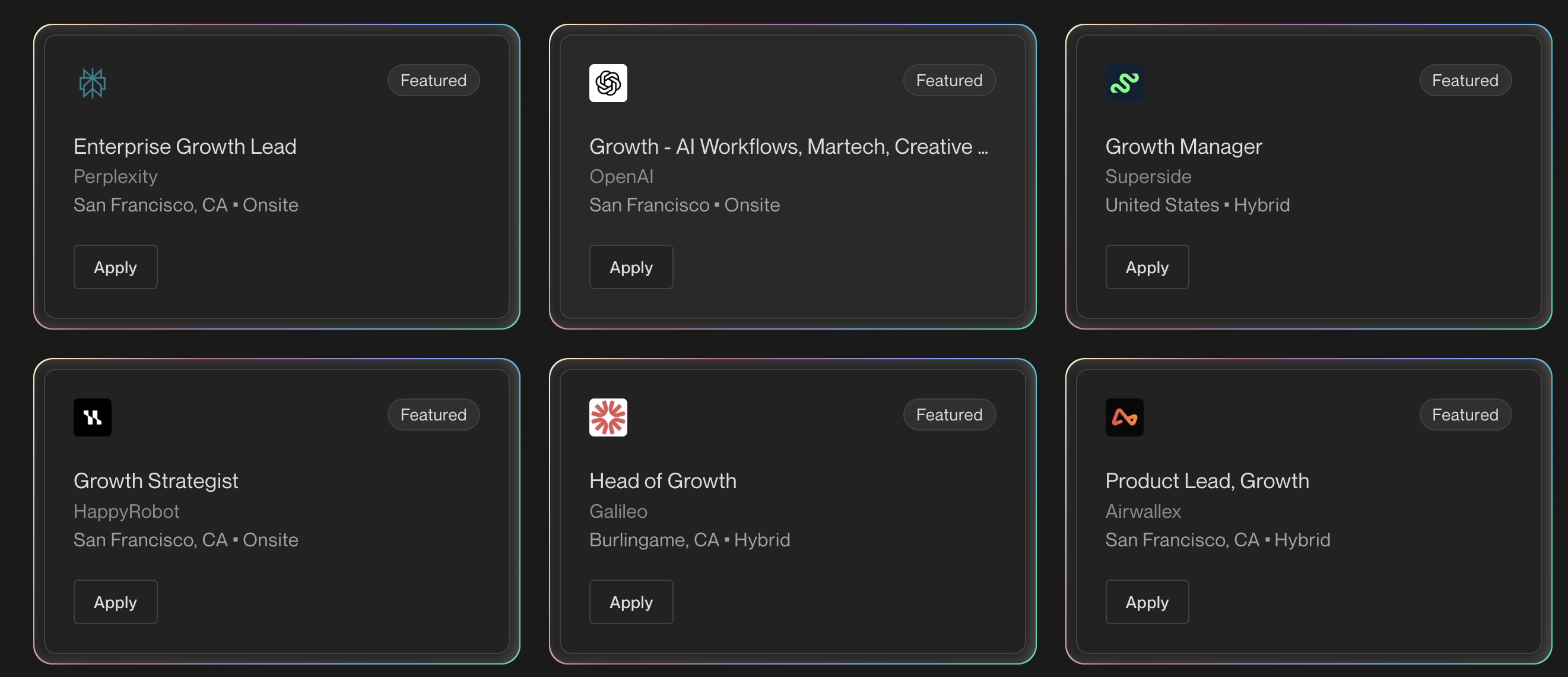
How growth is different from traditional marketing
Leadership teams are all asking the same question: how do we grow faster and stand out in the noise?
The answer is not to just throw out marketing. It is to evolve it.
Growth builds on the foundation of marketing: the storytelling, the brand, the messaging. Unlike traditional marketing, growth teams do not accept a standard playbook or channels. They start with the desired outcome, and then reverse engineer how to get there.
The best growth teams are also careful to never confuse attention with impact. Virality without substance doesn’t create durable growth, and without strong fundamentals, even the best experiments won’t scale.
Here is how the two approaches compare:
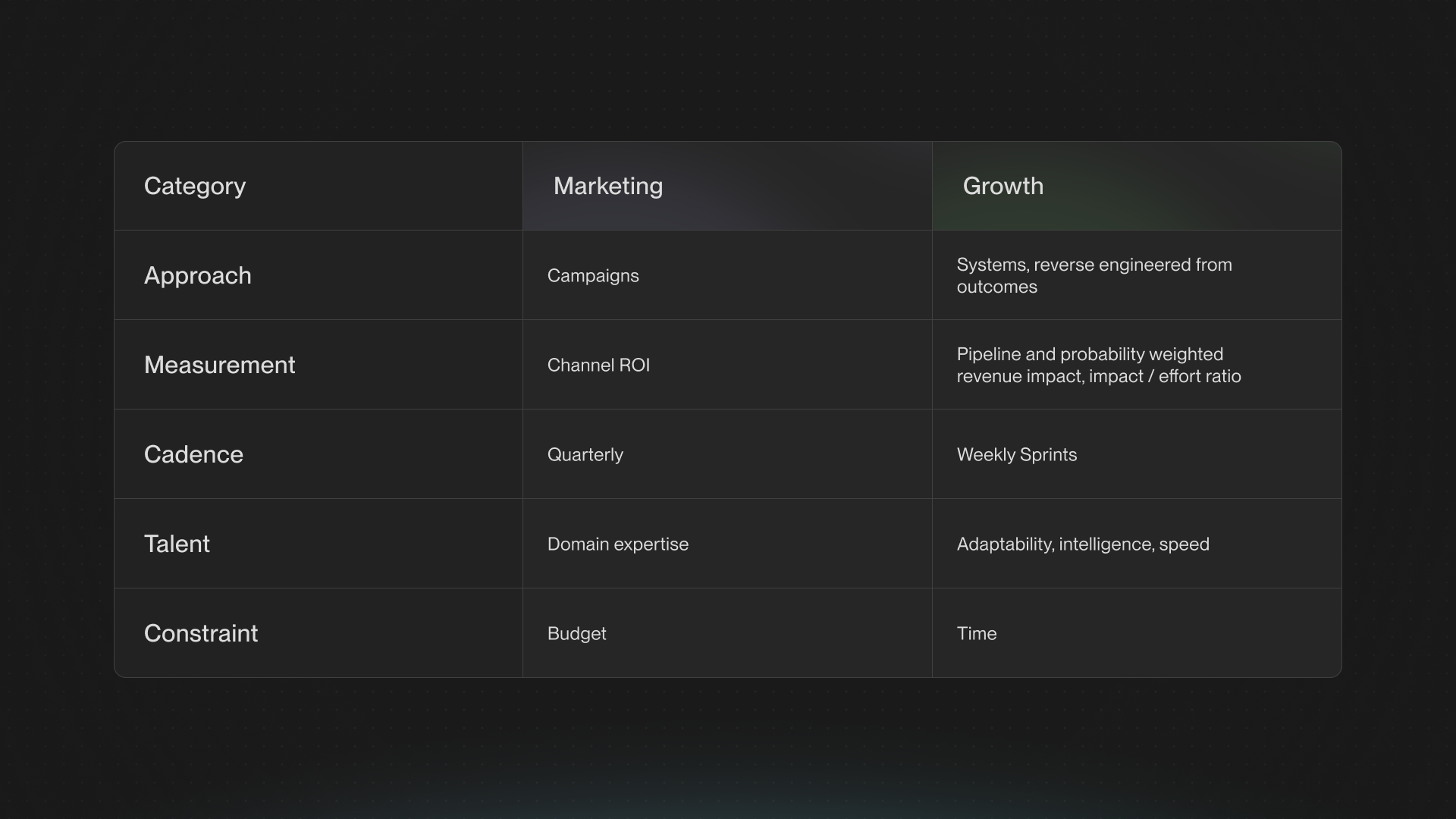
The building blocks of the best growth teams
From working with some of the leading growth teams, we have distilled the core operating principles they have followed to propel them into hypergrowth.
Growth team philosophy
The best growth teams share a common set of beliefs:
- First Principles Thinking: Forget the standard channels and playbook.
- Go Big: Take multiple big bets and be willing to fail (a lot).
- Highly Experimental: Think in hypotheses and impact. Track results obsessively.
- Optimize Everything: Anything a customer touches, from website pages to onboarding flows, can be optimized for growth.
How growth teams should work
The best growth teams operate like engineering teams, here are some of the core principles they follow:
- Metrics Obsessed: Every experiment is anchored in revenue and pipeline impact, focused on driving actual growth rather than vanity metrics.
- Build Scalable Engines: Automations, AI, and code give leverage to lean growth teams. By designing growth systems, results compound over time instead of fading like one-off campaigns.
- Ship and Learn Fast: Velocity is the biggest advantage, especially in hypercompetitive markets. Rapid experimentation, measurement, and iteration are essential.
- Data-Driven: All work is framed with hypotheses, forecasted impact, and clear success criteria. Data is the basis to all decision-making, complemented by taste and intuition.
- Ruthless Prioritization. Effort is focused on the few experiments with the highest potential impact, and everything else is cut. Impact to effort ratio is everything!
- Competitive and Creative. Study market leaders, talk to other growth experts, hunt for mispriced opportunities, and act aggressively on gaps that competitors miss.
- Big Bets, Lean Approach. Take big bets that have the potential to drive outsized impact. Start scrappy to validate signal, and then scale resources quickly if it works.

Hiring for growth roles
Hiring for growth is different from traditional GTM roles, and tons of companies struggle to find the right person. The strongest candidates typically show:
- Raw horsepower and speed: Quick learners who rapidly go from idea to action.
- A systems mindset: Understands how experiments fit into a bigger engine.
- Business intuition: Can grasp your market and business dynamics.
- Comfort with the unknown: Growth has a lot of ambiguous problems to solve.
- High ownership: Willing to take big bets and own outcomes.
When interviewing, test how candidates break down a complex growth problem, design a simple experiment, and measure its potential impact.
The ideal growth team structure
A growth operator looks more “full-stack” rather than specialized by channel or strategy. They can take on various surface areas that feed into revenue growth goals, by adopting the first principles mindset.
Here is an example of a typical growth team:
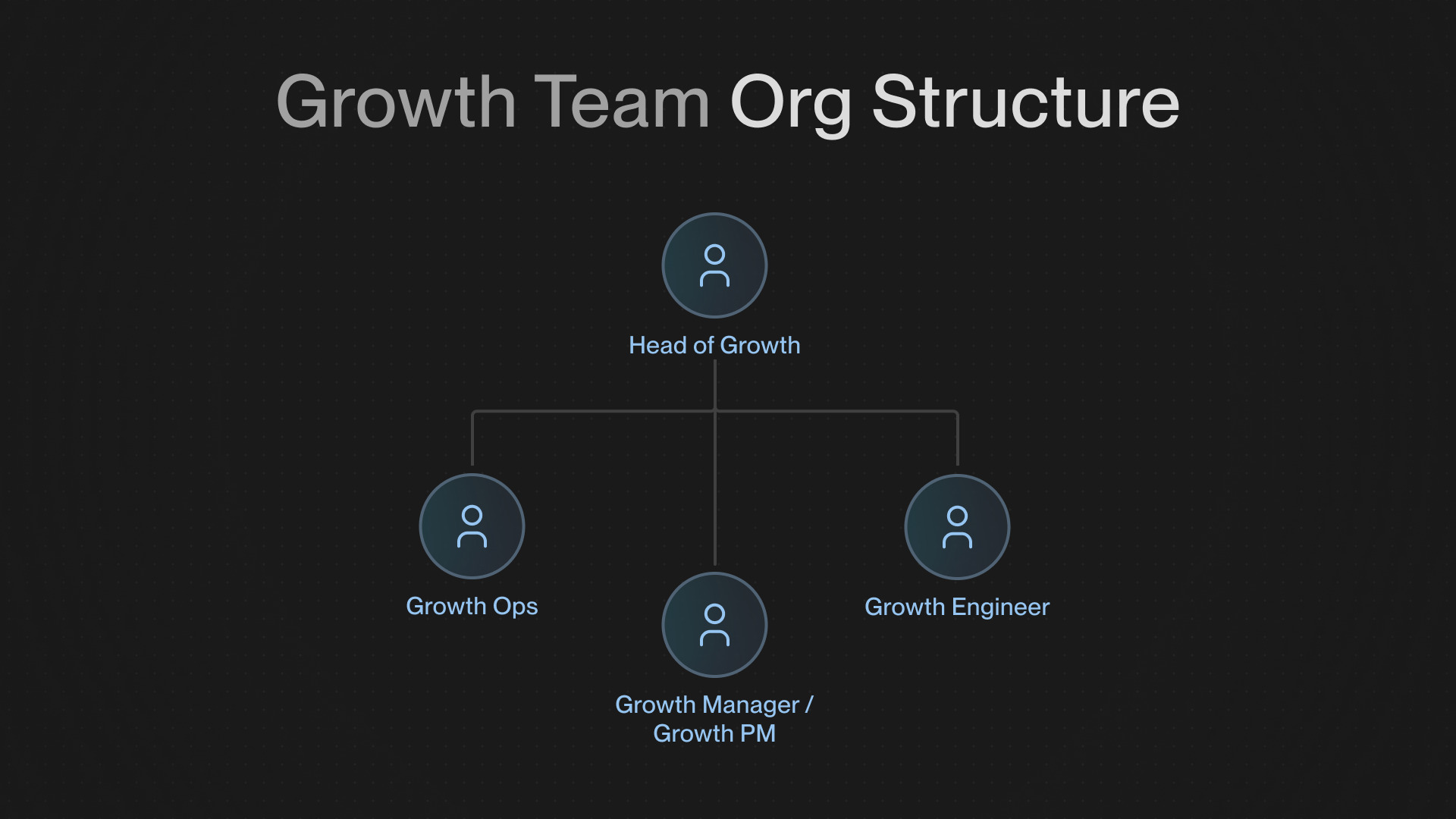
The growth team tech stack
A strong tech stack can take you very far as a lean growth team. Our rule of thumb: worry less about consolidation and more about picking tools that give you the most leverage.
Unify's core growth tech stack: Webflow, Airtable, Unify, n8n, Omni, Amplitude, Dagster, Profound, Notion, Clickhouse

How you start winning now (with or without a growth team)
The next era of GTM won’t be won by the biggest budgets or loudest campaigns. It will be led by teams that can treat distribution like an engineering problem and design sustainable growth engines.
You don’t need a growth title or a dedicated function to start working this way today. Give yourself leverage by running always-on systems instead of one-off campaigns, use experiments and data to shorten the time it takes to figure out what works, and cut out the noise to obsess over what actually drives revenue.
The companies that embrace this approach will move faster, capture opportunities earlier, and build momentum that compounds.
Thanks you's...
Thank you to the Unify growth team and the various growth leaders we work with on a daily basis at companies like Airwallex, Perplexity, Cursor, ClickUp, Flock Safety, and many others for inspiring this piece.
We are building Unify to bring this engineered approach to growth teams running outbound. By bridging the gap between data and action, Unify allows growth teams to run signal-based outbound that turns intent into pipeline on autopilot. See Unify in action.



.avif)


.avif)

